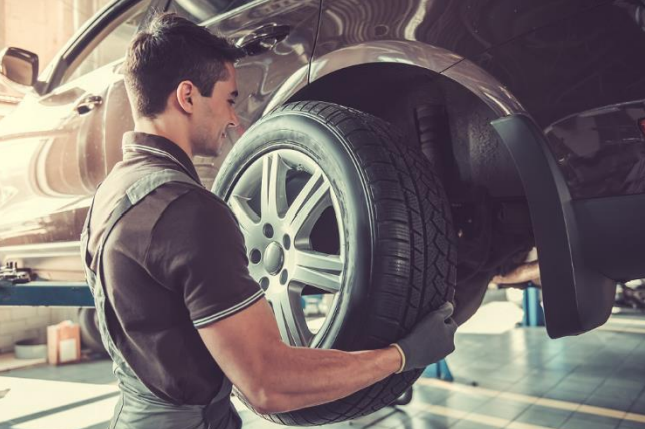- Tips & Tricks
- 5 likes
- 13187 views
- 0 comments
In many countries the end of summer has come and the colder, winter season is ahead of us. To prepare for the change in climate, many car owners take their car to the workshop for a tire change. Winter tires are safer to drive in this often-colder period of rain, hail and snow. Changing tires also provides an opportunity to check the air suspension system. When the wheels are removed, it is easy and convenient to check the condition of the struts, air springs and shock absorbers.

Some quick reminders
Check if the vehicle features a special “jack mode”. If present, use it to prevent the air being extracted from the bellow when jacking up the car. If this mode is not present, the car can be jacked without any precautionary measure. Some systems even automatically recognize that the car is being raised and retain the desired amount of pressure in the air springs.
Never lower the car with the lifting device when the air suspension system is depressurized. Doing this might cause the air bellow to unfold incorrectly, and the crimp ring can come off. Plus, an aging compressor might not be able to produce enough pressure to raise the car from zero. The relay could get damaged, or in the worst case, the compressor could burn out in its attempt to pressurize the system to the operational level.
What to ask your customer?
Car owners usually do not know too much about the function of the air suspension on their vehicle. Some common questions can identify or verify air suspension issues. Ask if the car drops more than 2,5 cm overnight or if the car is sometimes lower in one corner. If the customer has noticed these things, a further inspection may be in order.
What to check in the workshop?
As with many car components, colder temperatures influence the functioning and life span of air suspension components. The rubber of the air spring becomes a bit harder and less flexible. If aging rubber begins to show small cracks on the rolling piston side, the rubber’s reduced flexibility because of the cold weather might give it the last push to burst. If these small cracks are present, it is wise to advise replacing the air springs.
A water and soap solution usually works well in detecting an existing leak. Nevertheless, stay alert - not all leaks are easily found. A leak can also be located on the unfolding edge of the air spring, which stays hidden at normal system height. Inspect the air spring struts and shock absorbers for oil leakage and excessive rust.
If possible, inspect the condition of the air inlet hose on the compressor too. The combination of cold temperatures and the vibrations of the compressor could cause the hose to crack. When that happens, the compressor can suck in moist air and dirt instead of pure filtered air. When this goes unnoticed, it can have huge implications to the functioning of the air suspension system. Too much moisture in the system can cause oxidation and problems in the valve block when it freezes. The failing valve block will prevent the vehicle from leveling and a fault code will show on the instrument cluster.
Result
A standard check of the air suspension components that are exposed during a tire change can be positive for the workshop as well as the car owner. By performing these small checks, the customer can be assured that his vehicle is safe to drive and (expensive) consequential damage, like a burnedout compressor, can be avoided.
The benefit for a workshop is not only delivering great customer service, but also potential additional turnover. When the check reveals leaks, the car will need to be repaired in order for the system to fully function and provide a comfortable and safe ride. So, the next time you do a tire change, check the air suspension components!
---------------------------------------------------------------------------------------------------------------
This information is provided to you by Arnott – Air Suspension Products. With more than 30 years of experience in engineering, designing, and manufacturing high quality air suspension components for the aftermarket, Arnott is the technical expert when it comes to air suspension systems. Arnott’s products are produced with high-quality, OE components offering exact form, fit and function. Each product is extensively tested in our American and European facilities and custom-tuned to suit the specific vehicle make and model before being produced.

Comments (0)